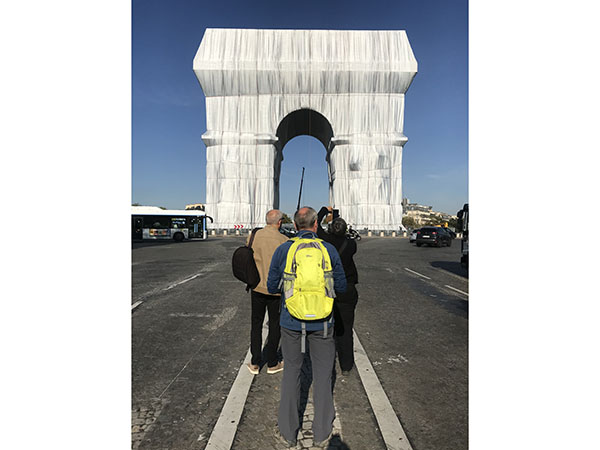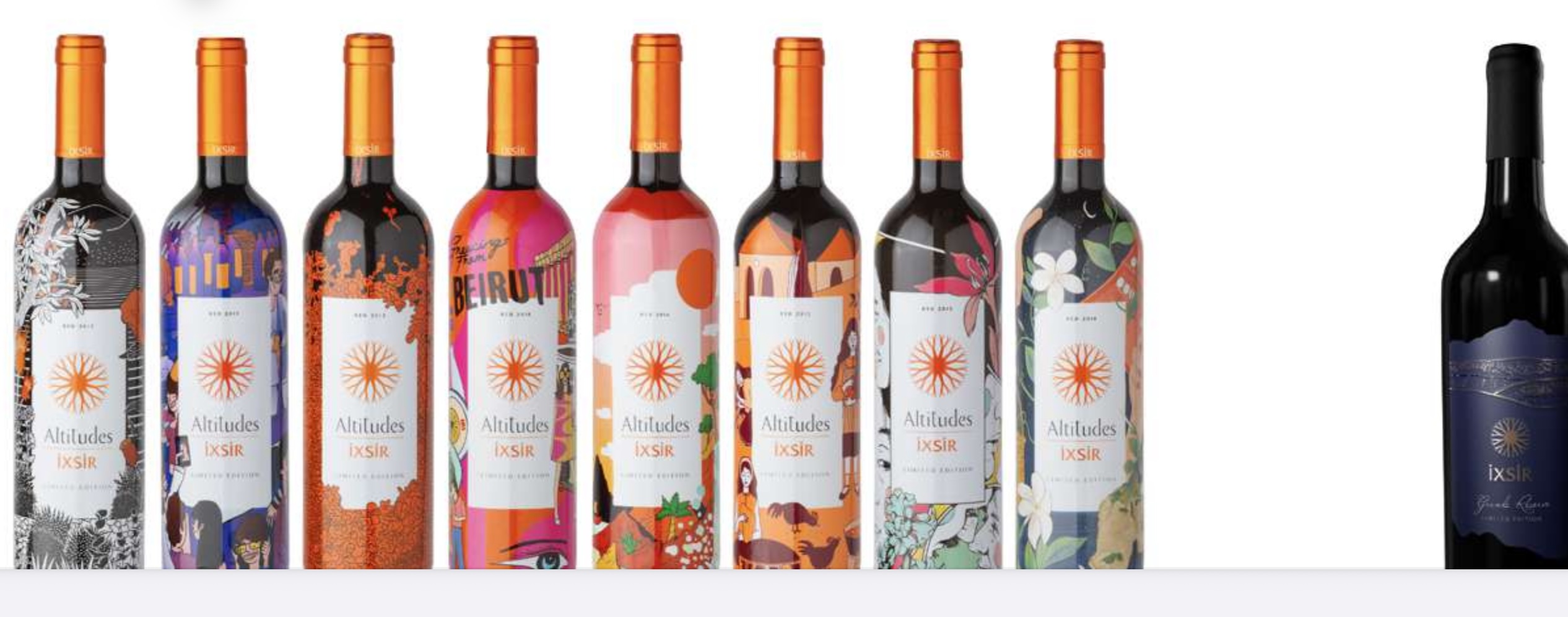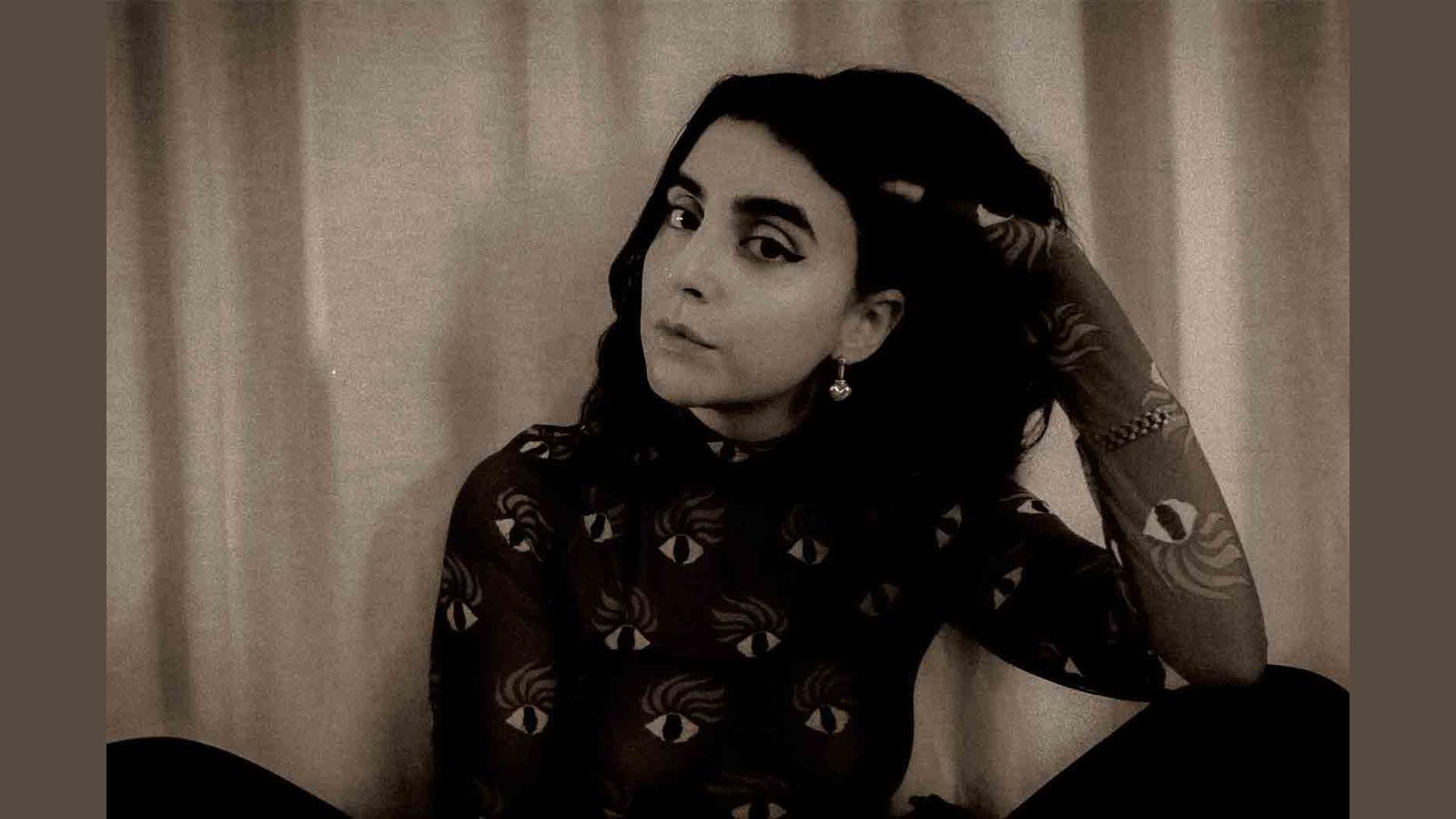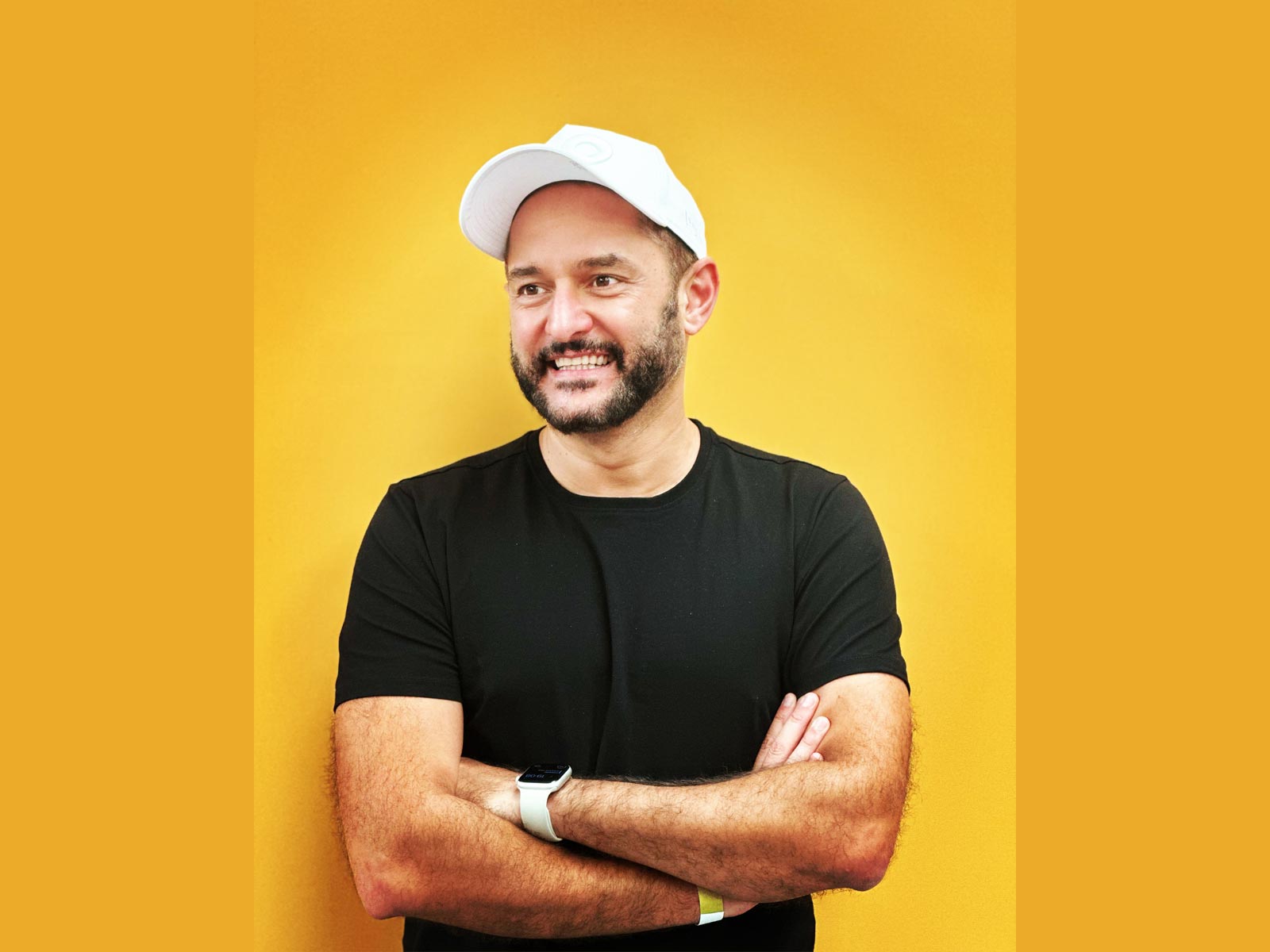Art & Design
The PR behind Jeanne-Claude & Christo’s wrapped Arc de Triomphe
by Mark Tungate
October 4, 2021
.jpg) Advertisement
AdvertisementBefore last week I couldn’t really call myself a fan of Christo and Jeanne-Claude’s work. I found the artistic duo’s idea of wrapping things whimsical but repetitive. That was until I strolled up the Champs-Elysées to get my first up-close-and-personal look at their work: The Arc de Triomphe, Wrapped.
The towering arch was swathed in a silvery fabric that shimmered in the sunlight and rippled in the breeze. On the ground there was a palpable sense of wonder and celebration. Some good-natured jostling as we jockeyed for position to snap picture after picture. Young guides in high-visibility orange vests handed out samples of the fabric and answered questions. Many selfies were taken. It was as if the artists had always known that their work was perfect for the Instagram era.
Christo Vladimirov Javacheff and Jeanne-Claude Denat de Guillebonet met and married in the 1950s. They initially worked together under the brand name “Christo”, adding Jeanne-Claude’s name in 1994 to reflect the collaborative nature of their partnership. In Jeanne-Claude’s 2009 obituary, The New York Times reported that they first went with “Christo” for the sake of simplicity – and because female artists were less respected at the time.
You may noticed something just then. That’s right: Jeanne-Claude is no longer with us. And neither is Christo, who died in May last year. But planning for the Arc de Triomphe project was well underway, so with the permission of the City of Paris it went ahead, overseen by Christo’s nephew. In place until October 3, the installation required 25,000 square meters of recyclable silver-blue polypropylene fabric, bound with 3,000 meters of red rope. The PR team was wise to stress the word “recyclable”, because the question was one of the first to come up when the public began debating the merits of the project.
The result was a sight Christo had first imagined in 1962, when he lived nearby.
PR strategy
Clearly there was nothing banal about wrapping up a world-famous monument like a Christmas present, so everyone concerned (Christo's team, the office responsible for national monuments, the tower's administrative body and Paris city hall) knew that they would have to tread a delicate communications path.
Delphine Le Goff, deputy editor of the French communications magazine Stratégies, comments:
“If you were on the Champs-Elysées on September 18, you had to be blind not to see that the packaging of the Arc de Triomphe was a colossal success. And you only only needed to see the deluge of photos of the wrapped monument on social media to gauge the public's enthusiasm. I think the PR team communicated really well on the ‘storytelling’ around the work: the love story between Christo and Jeanne-Claude; the dream of a lifetime from 1962 to the death of Christo in 2020 – so close to having realized his fantasy.”
But then there was the cost of the project: 14 million euros. The French wanted to know where the money came from.
“The PR strategy may not have focused enough on the 14 million euros, a sum much criticized by Internet users, who feared that all those millions came out of public money. In fact, they were funded entirely by an events company and didn’t cost the taxpayer a centime.”
At the site I asked one of the guides – actually an Italian student – about the cost. Well-briefed, she told me without blinking that Jeanne-Claude and Christo had self-financed their work by selling his designs and sketches, which by now fetched huge sums.
Since the inauguration, Delphine Le Goff adds, “it seems that the critics have gone up in smoke, giving way to simple admiration for the work”.
Meanwhile, on Instagram, many people have tried to parse the “meaning” of Christo and Jeanne-Claude’s installations. But the couple themselves said their projects “contained no deeper meaning than their immediate aesthetic impact; their purpose simply being for joy, beauty, and new ways of seeing the familiar”.
If joy was their goal, the atmosphere on the Champs-Elysées that morning attested to their success.
This article was first published in Epica website





.jpg)










